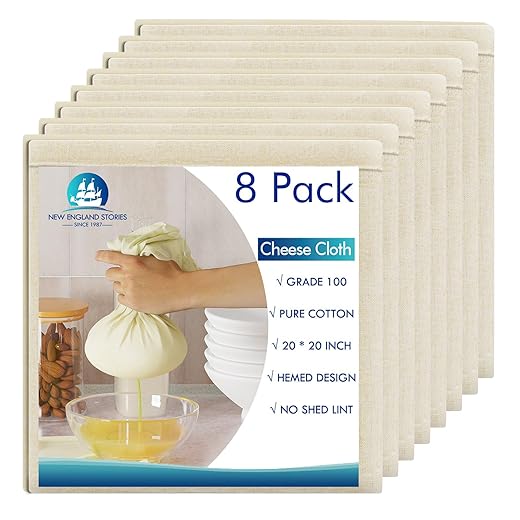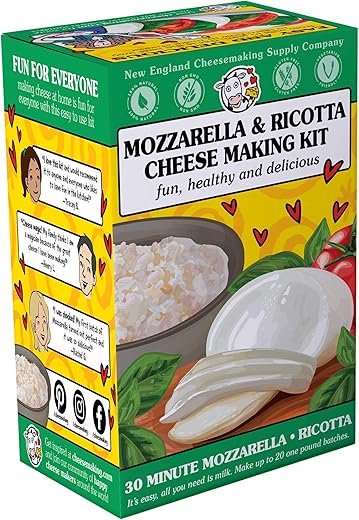









The Art of Cheese Making: A Comprehensive Guide
Cheese making is a time-honored craft that marries science and art, transforming humble milk into a plethora of delightful flavors and textures. Whether you’re a novice curious about the basics or an experienced enthusiast eager to refine your techniques, this guide will walk you through the fascinating world of cheese making.
Understanding the Basics of Cheese Making
At its core, cheese making involves a few fundamental steps: curdling, cutting, cooking, draining, and aging. But why does milk transform into cheese? The magic lies in the process of coagulation, where the proteins in milk are transformed by adding acid or rennet. Think of it as a dance—the proteins, fats, and bacteria all work together to create something entirely new and delicious.
Imagine milk as a blank canvas. When you add rennet, it’s like introducing the first brushstroke. As the curds form, they begin to take shape, much like a sculpture emerging from a block of marble. It’s a beautiful transformation that requires both patience and precision.
Gathering Your Cheese Making Supplies
Before diving into cheese making, it’s essential to gather the right equipment and ingredients. Here’s what you need:
– **Milk:** Choose high-quality whole milk, preferably unpasteurized if you can find it. The fresher, the better!
– **Rennet:** This enzyme is crucial for curdling the milk. You can find it in liquid or tablet form.
– **Cultures:** Specific bacterial cultures are necessary for different types of cheese. For example, mesophilic cultures work well for cheddar, while thermophilic cultures are ideal for mozzarella.
– **Equipment:** A large pot, thermometer, cheese mold, and cheese cloth are essential. Don’t forget a ladle and a slotted spoon!
With your supplies at the ready, you’re poised to embark on a cheesy adventure.
The Cheese Making Process: Step by Step
Now, let’s break down the cheese making process into manageable steps.
1. Heating the Milk
Start by pouring your milk into a large pot and slowly heating it to around 85°F (29°C). Stir gently to prevent scorching. This step is crucial; overheating can ruin your cheese.
2. Adding Cultures and Rennet
Once the milk reaches the desired temperature, sprinkle in your cultures and stir gently. After a few minutes, add the rennet, stirring in an up-and-down motion. Allow the mixture to rest for about 30-60 minutes, during which the curds will form.
3. Cutting the Curd
Using a long knife, cut the curds into small squares—about ½ inch. This step helps release whey, the liquid byproduct of cheese making. Let the curds rest for about 5-10 minutes.
4. Cooking the Curd
Slowly heat the curds to about 105°F (40°C), stirring gently. The cooking process helps firm up the curds and develop flavor.
5. Draining the Whey
Once cooked, it’s time to drain the whey. Pour the curds into a cheese cloth-lined colander. Gather the corners of the cloth and squeeze out excess whey.
6. Aging Your Cheese
This is where the magic happens. Depending on the type of cheese, you may want to press the curds into a mold and let them age in a controlled environment. Aging can take anywhere from a few days to several months.
Isn’t it fascinating how a simple process can yield such a vast array of flavors and textures? From creamy brie to sharp cheddar, the possibilities are endless!
Common Mistakes to Avoid
Even seasoned cheese makers make mistakes. Here are a few pitfalls to avoid:
– **Ignoring Temperature:** Cheese making is all about precision. Keep an eye on your thermometer!
– **Not Using the Right Ingredients:** Always opt for high-quality milk and specific cultures for the type of cheese you’re making.
– **Skipping the Aging Process:** Rushing through aging can lead to bland cheese. Patience is key!
Exploring Different Types of Cheese
As you become more comfortable with the cheese making process, why not experiment with different types? Soft cheeses like ricotta and mascarpone are great for beginners, while harder cheeses like Parmesan and Gouda offer a more complex challenge.
You can even infuse your cheeses with herbs, spices, or even wine! Think of it as adding your personal flair to a classic dish.
Conclusion
Cheese making is not just a hobby; it’s an art form that connects you to centuries of tradition and creativity. With each batch, you hone your skills and deepen your appreciation for this culinary craft. So why not grab some milk and start experimenting today? Who knows? You might just discover your new favorite cheese!
FAQs
1. Can I use store-bought milk for cheese making?
Yes, but it’s best to use whole, unpasteurized milk if you can find it. This will yield the best flavor and texture.
2. How long does it take to make cheese?
The process can take anywhere from a few hours to several months, depending on the type of cheese and aging time.
3. Is cheese making difficult for beginners?
Not at all! While it requires some practice, many simple cheeses can be made with ease. Start small, and build your skills over time.
